
China
16:14, 03-Sep-2018
Tibet's poverty alleviation: New life on the 'roof of the world'
Updated
16:02, 06-Sep-2018
Li Qian
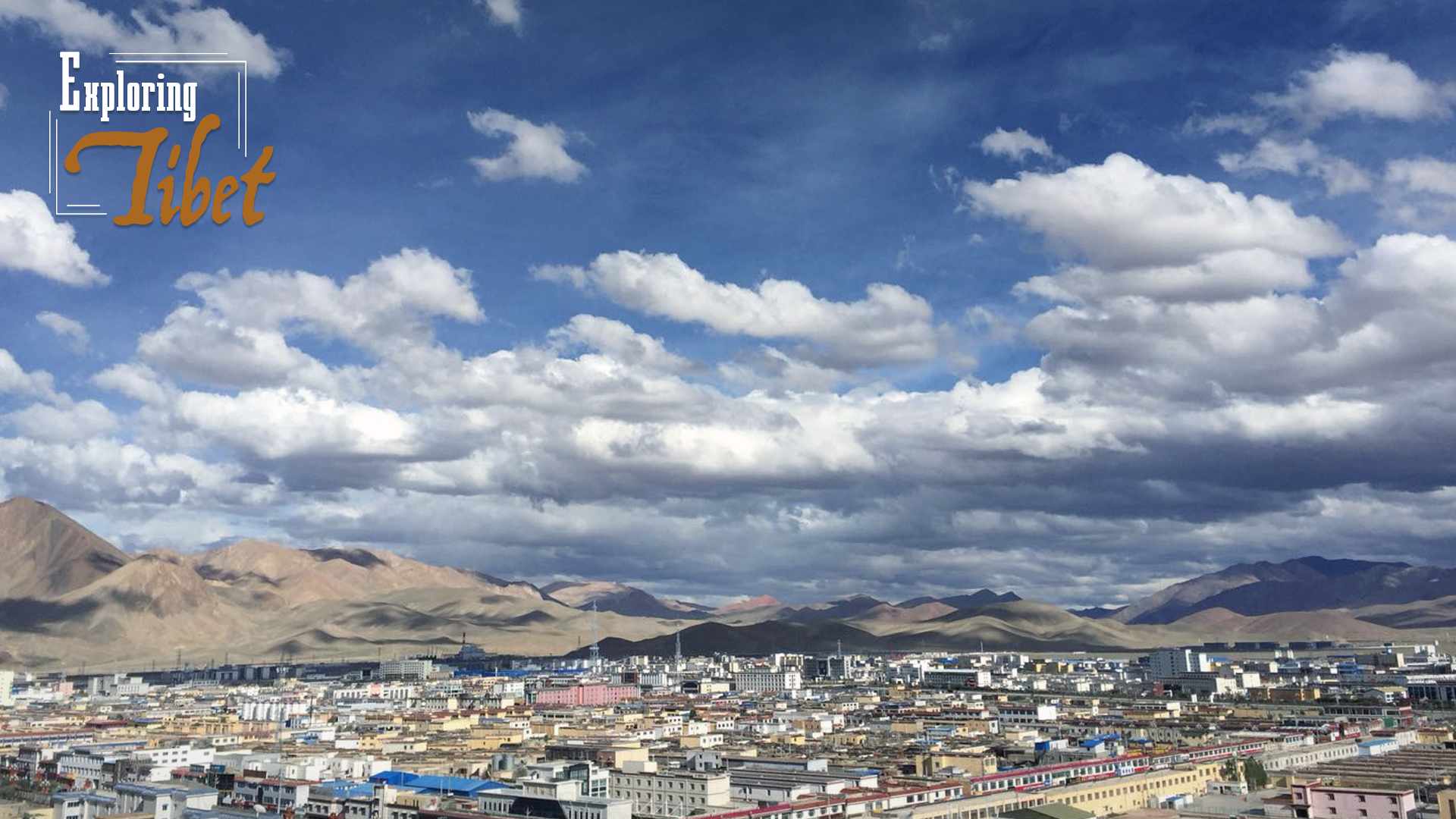
It has been one year since Tseten moved to a house in the Kangle residence area in Shiquanhe town of Gar County, Tibet's Ngari Prefecture.
The retired shepherd moved to his new house in the town from the woodlands at a higher altitude, becoming one of the thousands of local people who benefited from the government's policies for poverty alleviation.
He is now living with his daughter and son in law, who have set up their own business, as well as two granddaughters. In the new home which has been furnished, the family just needs to pay for utilities.
"It took a while to get used to these surroundings but the living conditions are definitely better and the hygiene is better," Tseten told CGTN Digital.
New home

Kangle residence area in Shiquanhe town of Gar County, Tibet's Ngari Prefecture. /CGTN Photo
Kangle residence area in Shiquanhe town of Gar County, Tibet's Ngari Prefecture. /CGTN Photo
With an average altitude of over 4500 meters, Ngari Prefecture is known as "the ridge of the roof of the world".
Harsh conditions, such as lower oxygen levels and a fragile ecology, make life hard there.
For people in high-altitude areas, where conditions make it harder to make a living, local government has started the relocation work as a poverty alleviation measure.
Housing over 700 families from all seven counties in Ngari, Kangle residence area is one of the 30 planned relocation sites in the region, He Bin, an official from Ngari Prefecture Development and Reform Commission told CGTN Digital.
The construction of the sites has been basically completed and the relocation work will be concluded in September, with a total of 8,185 people from 2,225 families to be relocated to the sites, according to He.
New jobs
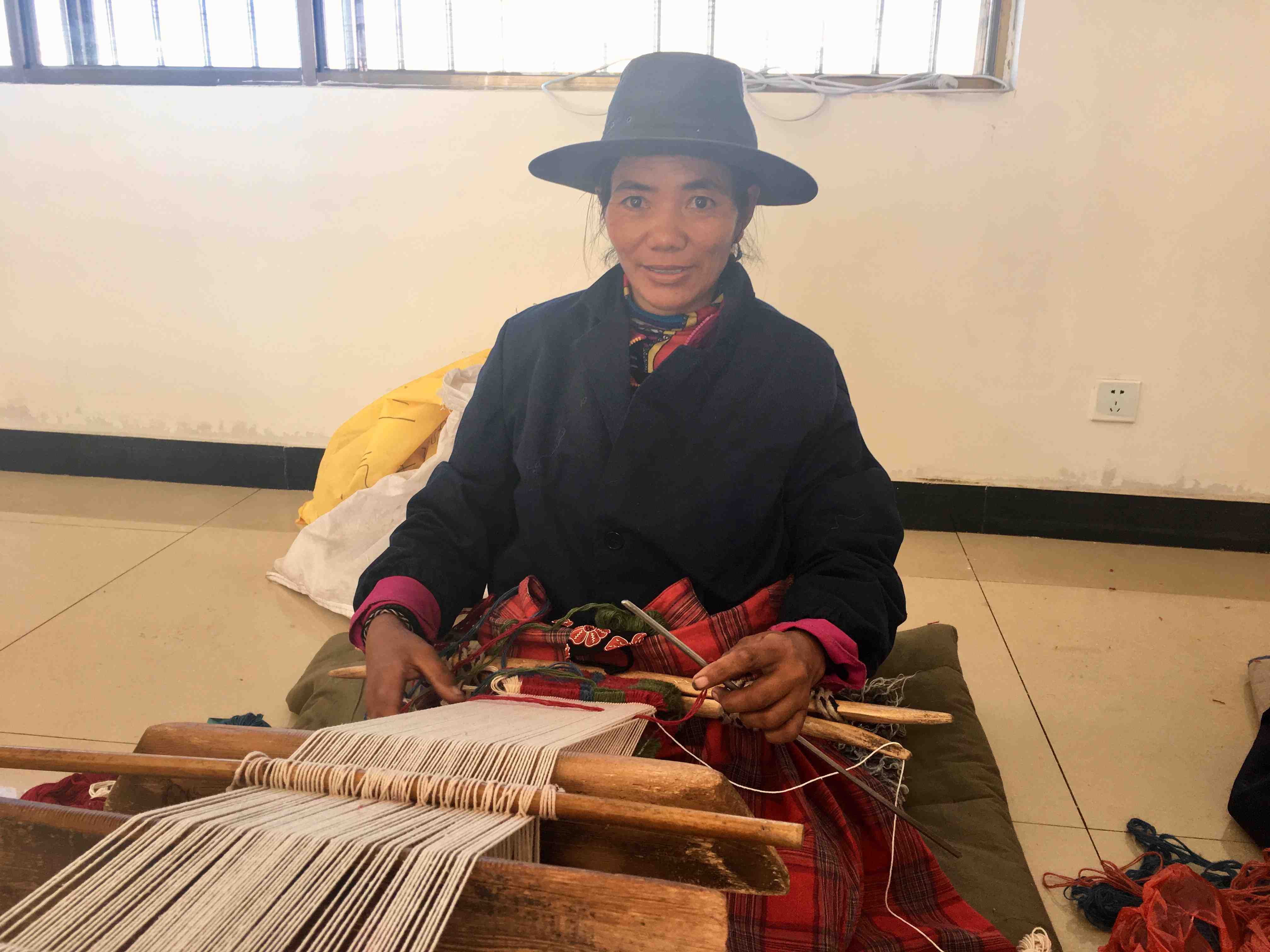
A woman works at a clothing and carpet factory near Kangle resident area in Shiquanhe, Tibet's Ngari Prefecture on August 29, 2018. /CGTN Photo
A woman works at a clothing and carpet factory near Kangle resident area in Shiquanhe, Tibet's Ngari Prefecture on August 29, 2018. /CGTN Photo
As part of the poverty alleviation program, the local government has built factories and eco-agricultural parks to offer jobs for the relocated people.
At least one person in each relocated family will be offered a job, local officials said.
"Now I have time to send the children to school, and also, I can come to work, which is good to me," said a worker at a clothing and carpet factory near the resident area.
With supports from local government, the factory can harvest an annual sales revenue of 26 million yuan (3.8 million US dollars) and provide 120 jobs for locals.
A worker can gain an annual income of 30,000 to 40,000 yuan, according to officials from the factory.
New surroundings
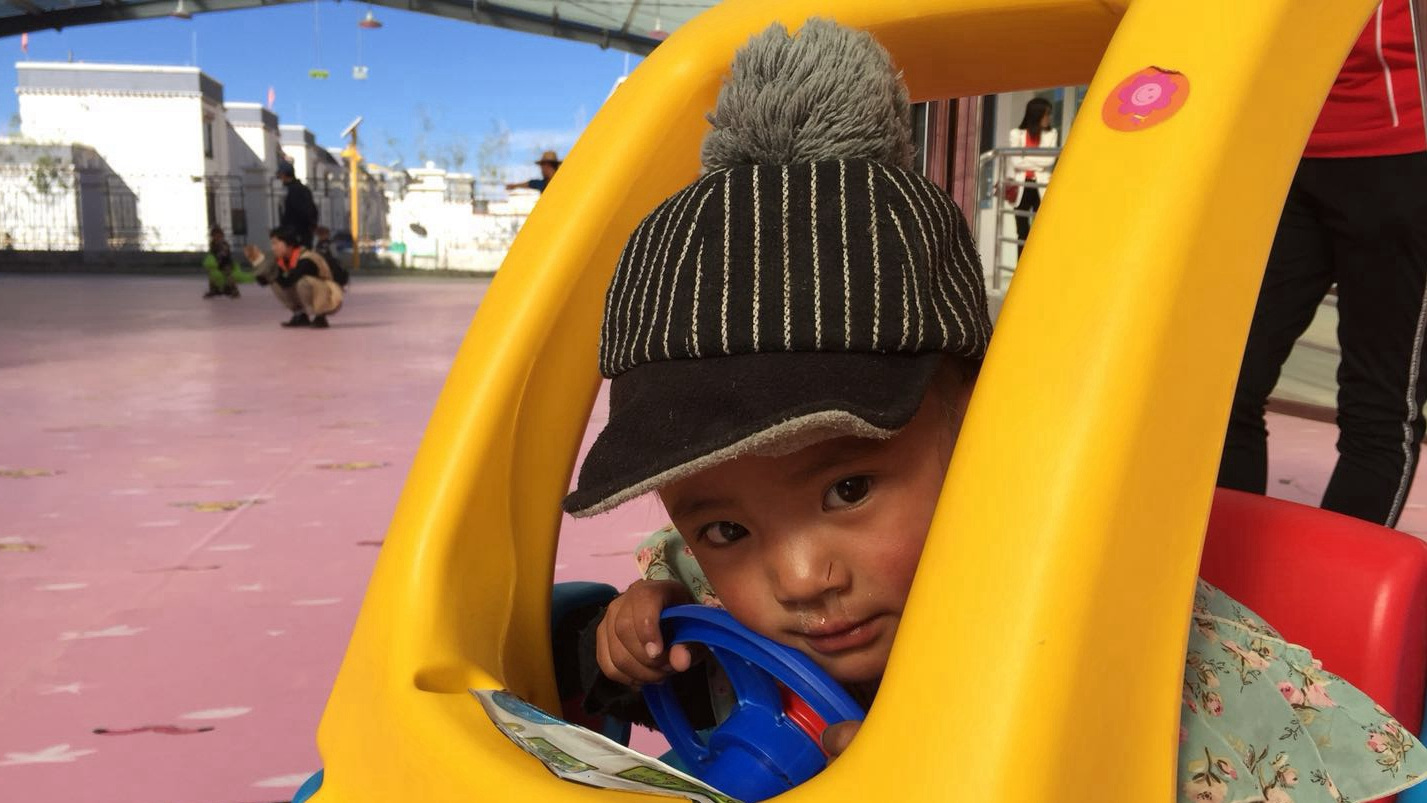
A kid plays at a kindergarten in Kangle residence area in Shiquanhe, Ngari Prefecture in southwest China's Tibet on August 29, 2018. /CGTN Photo
A kid plays at a kindergarten in Kangle residence area in Shiquanhe, Ngari Prefecture in southwest China's Tibet on August 29, 2018. /CGTN Photo
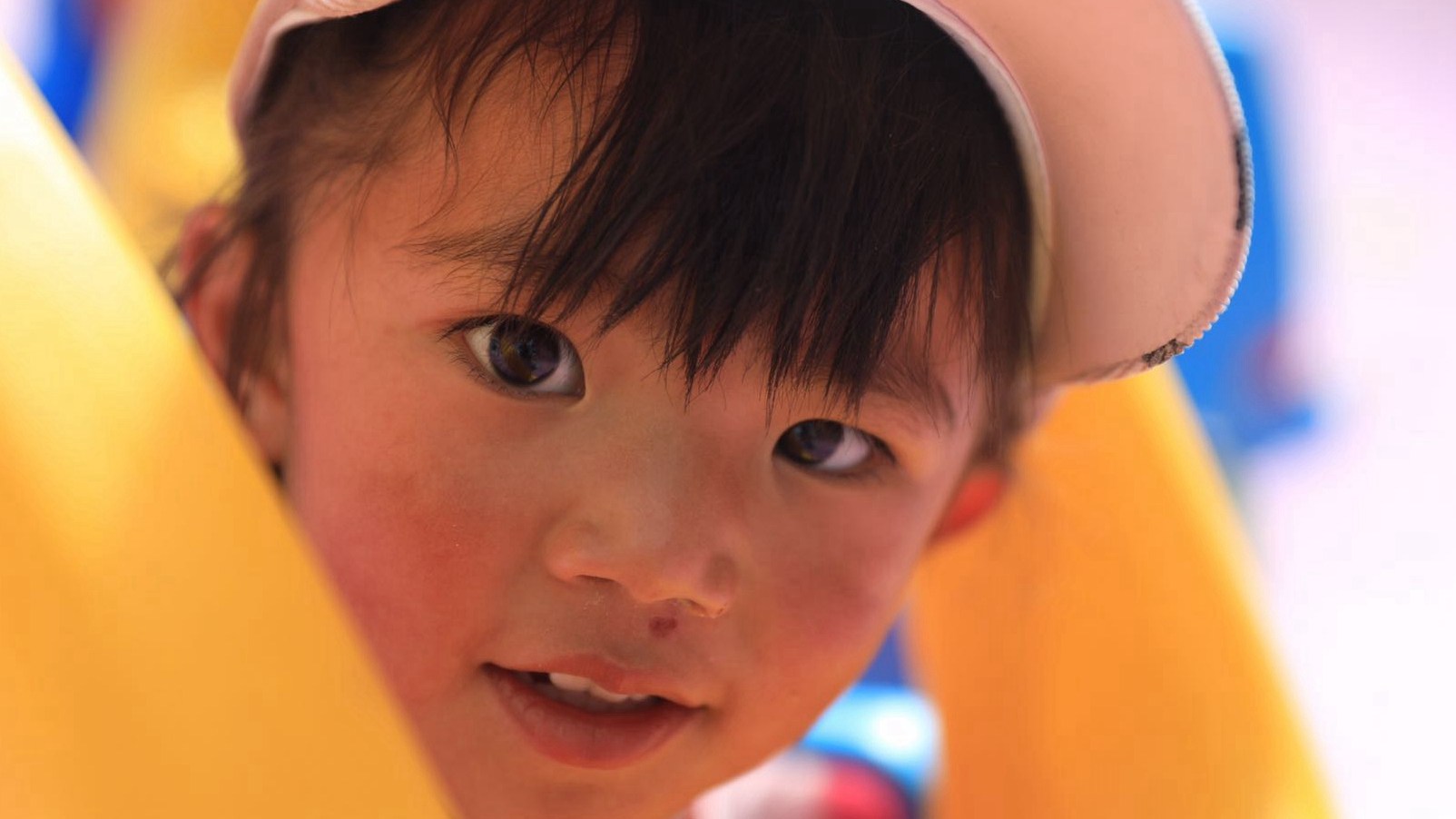
A kid plays at a kindergarten in Kangle residence area in Shiquanhe, Tibet's Ngari Prefecture on August 29, 2018. /CGTN Photo
A kid plays at a kindergarten in Kangle residence area in Shiquanhe, Tibet's Ngari Prefecture on August 29, 2018. /CGTN Photo
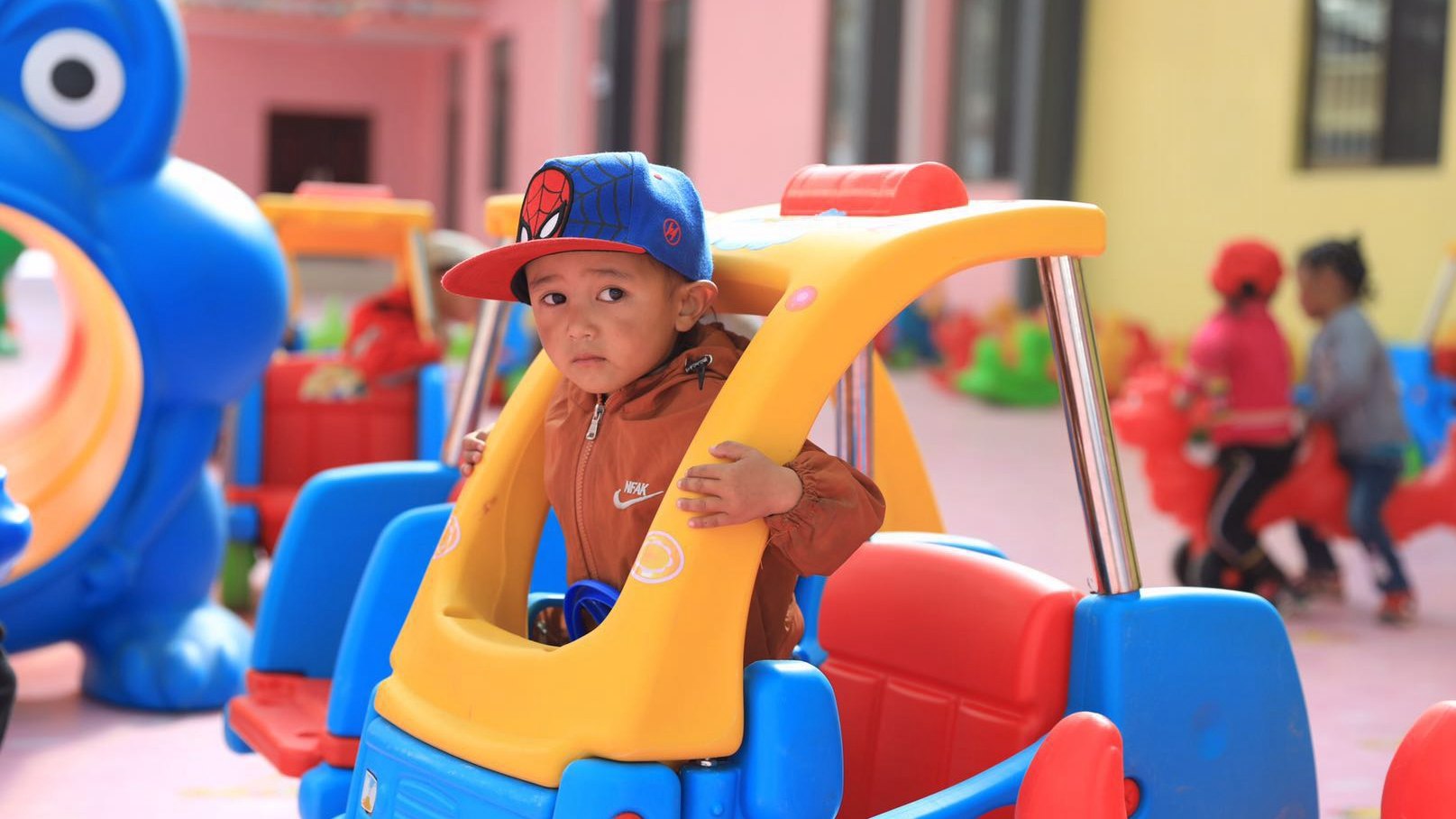
A kid plays at a kindergarten in Kangle residence area in Tibet's Ngari Prefecture on August 29, 2018. /CGTN Photo
A kid plays at a kindergarten in Kangle residence area in Tibet's Ngari Prefecture on August 29, 2018. /CGTN Photo
In the new area, a kindergarten is dedicated to the neighborhood residents to improve the enrollment rate of the kids from the relocated families.
Tibet now offers free education for 15 years to students from kindergarten to senior high school.
Free accommodation and meals are also offered to rural students.
Click here for other stories of #ExploringTibet series:
3339km

SITEMAP
Copyright © 2018 CGTN. Beijing ICP prepared NO.16065310-3
Copyright © 2018 CGTN. Beijing ICP prepared NO.16065310-3